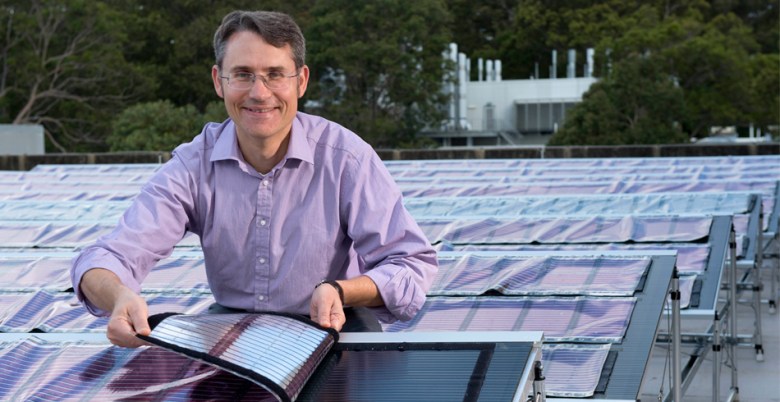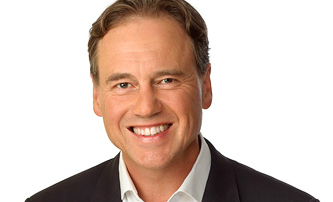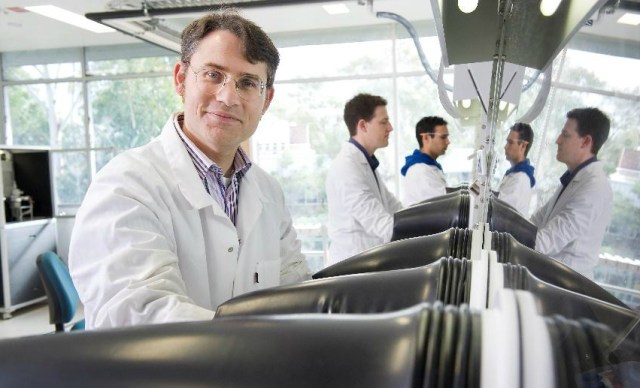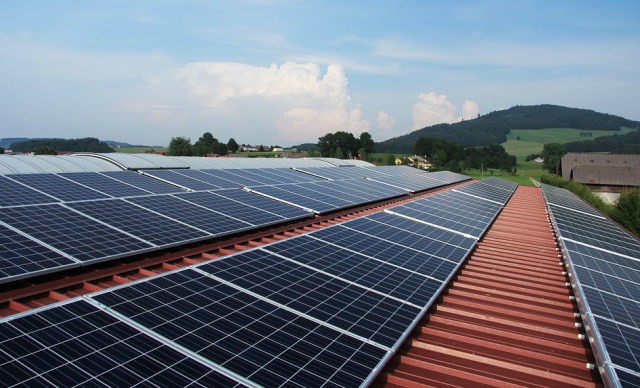
A University of Newcastle (UON) research team at the Centre for Organic Electronics (COE) is making the first installation of its printed solar panels at Chep Australia’s Beresfield site.
Led by Professor Paul Dastoor, the team at the university have come up with a method of printing solar panels using thin sheets of plastic and electronic ink, which it says could potentially change the way businesses and households across the world are powered.
Dastoor has been actively promoting the technology to printers for the past year, including a speech at a NSW LIA High-Speed Digital dinner event, and a demonstration at PacPrint 2017.
Having worked on this technology for the last 15 years, Dastoor says the main advantages are the speed and low cost at which it can be produced, along with its potential environmental benefits.
It takes advantage of already-existing inkjet technology to transfer the electronic ink onto the substrate, and could open up a huge market for functional print.
Dastoor explains, “The low-cost and high speed of deployment of this technology can be a real game changer for making renewable electricity more accessible and reducing demand on base-load power. In terms of efficiency, the solar cells are also currently showing around a 2-2.5 per cent power conversion rate.”
These ink solar panels could be manufactured for less than $10 a square metre, and the University’s lab scale printer, a part of the Australian National Fabrication Facilities (ANFF) at the COE, can produce hundreds of metres of material per day, making it faster to produce than any other form of renewable energy.
It is also an ideal solution for disaster relief and recovery applications supporting displaced people and powering temporary emergency bases.
Chep Australia came across this innovation after visiting the University of Newcastle’s demonstration site, which features 100 square metres of solar modules on the roof of a building at the university.
Speaking about this technology, Lachlan Feggans, senior manager, Sustainability, Brambles, says, “We were invited to see this pioneering technology at the University and hear from the passionate team of researchers working on this solution. This was a great opportunity to learn about these innovative, lightweight printed solar panels and their potential to cost effectively eliminate carbon emissions from electricity.
“Chep has a great foundation in our sustainable business model, which sees platforms shared and reused in a circular economy by multiple participants in the supply chain. We recognise that we can continue to do better and the cost effective renewable energy solution presented is an opportunity that could have an immediate application at our service centres”.
“As part of our commercial partnership, we’re excited to be trialling this technology at the Chep service centre in Newcastle. The first installation will be made this financial year (FY18), making it Chep Australia’s first energy self-sufficient service centre. This site was selected because of its proximity to the University.
“Through our collaboration with UON, we see the potential to make Chep’s business model even better. Our aim is to develop better supply chains, but we recognise that this begins with sustainability in our own operations.
“Signing a partnership with Chep brings us closer than we have ever been to making this technology a reality. It will help our team test the performance of this technology in a real-world commercial setting and determine the lifespan of the material.
“We envisage having this printed solar technology available commercially in two to three years’ time, helping the accessibility to sustainable energy.”
Comment below to have your say on this story.
If you have a news story or tip-off, get in touch at editorial@sprinter.com.au.
Sign up to the Sprinter newsletter



